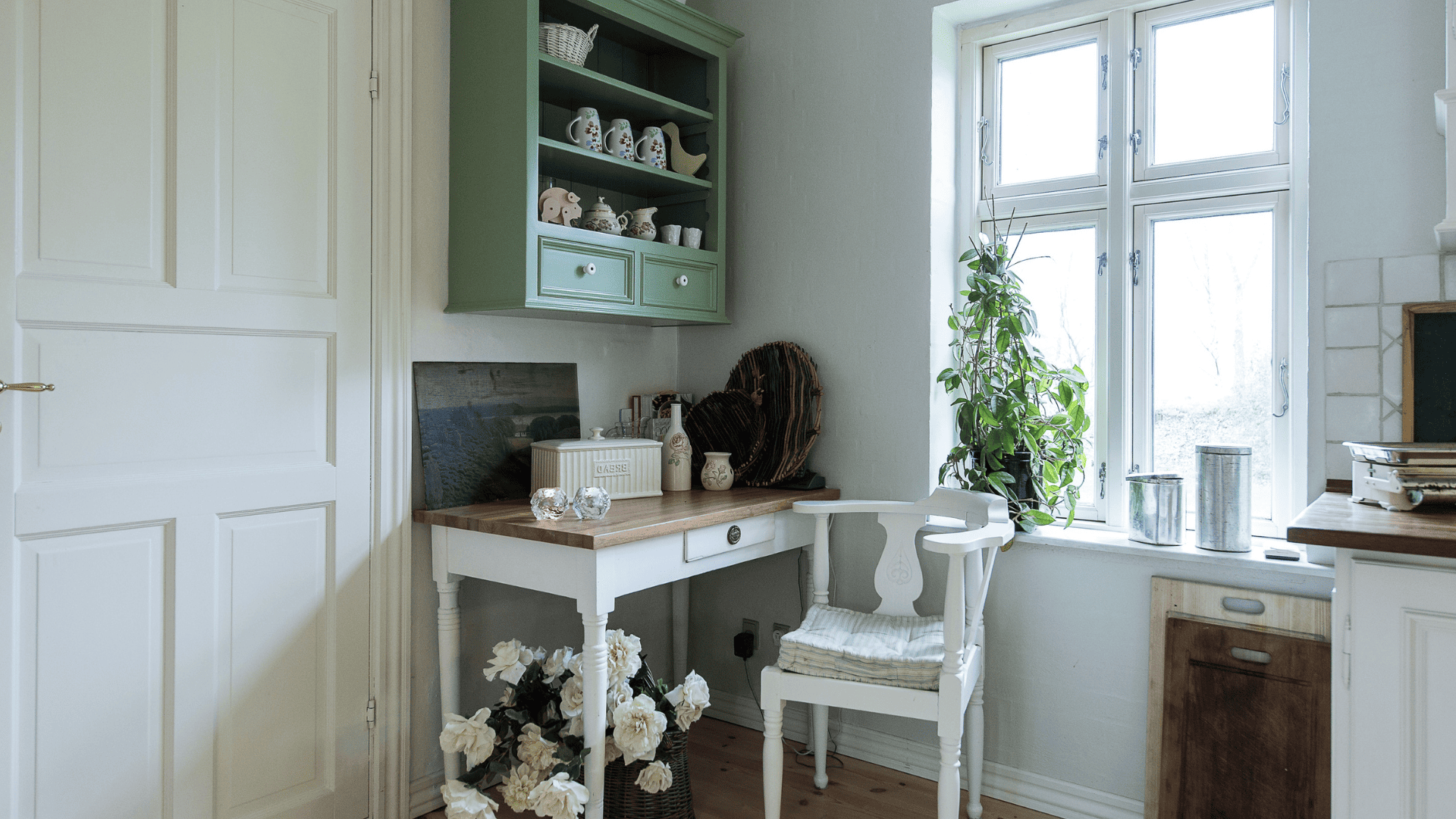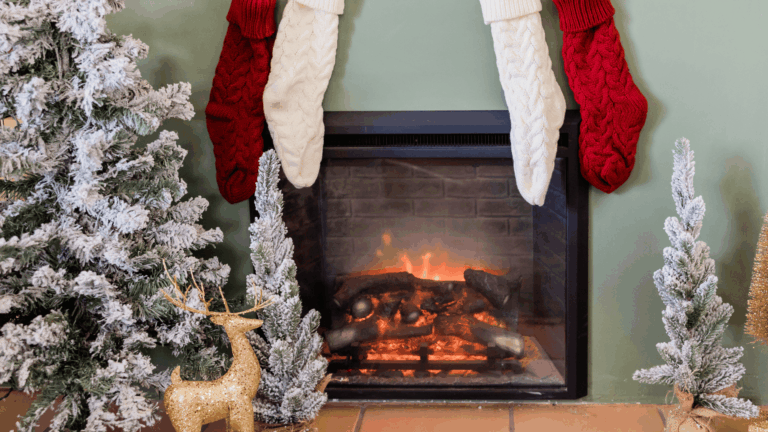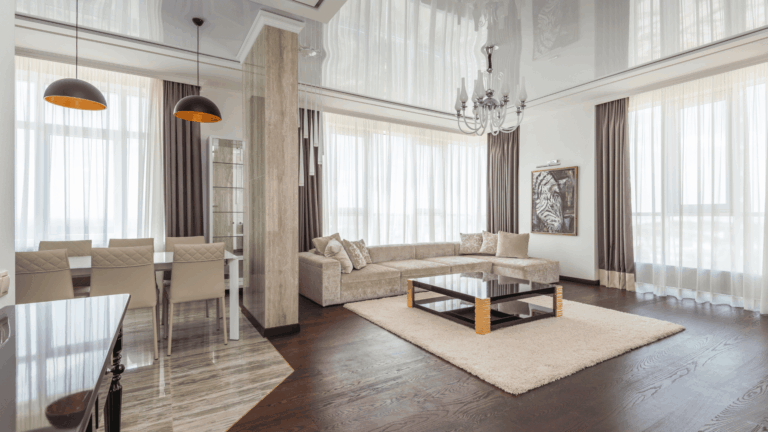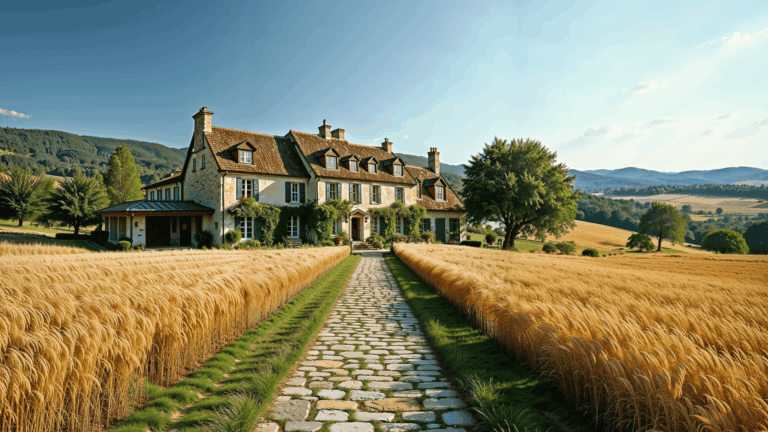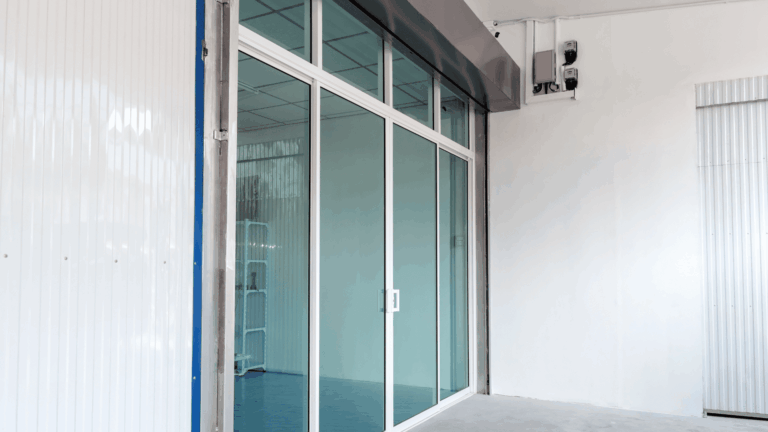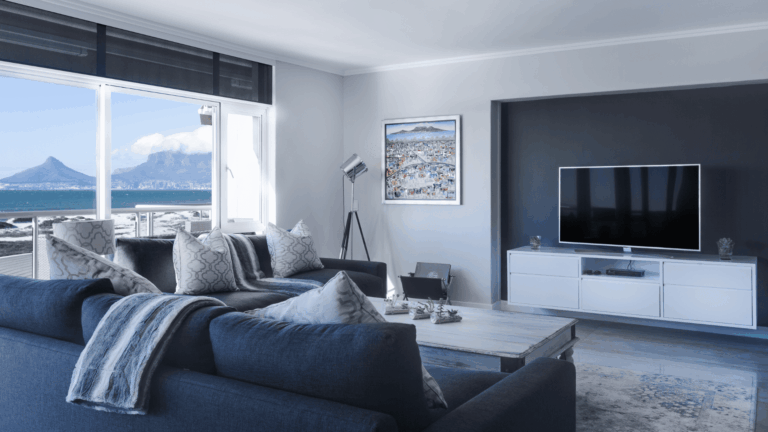25 Stunning Mountain Home Decorating Ideas for a Cozy & Stylish Retreat
25 stunning mountain home decorating ideas for creating a cozy and stylish retreat. Discover rustic, modern, and budget-friendly tips to transform your mountain getaway.
Understanding the Unique Charm of Mountain Homes
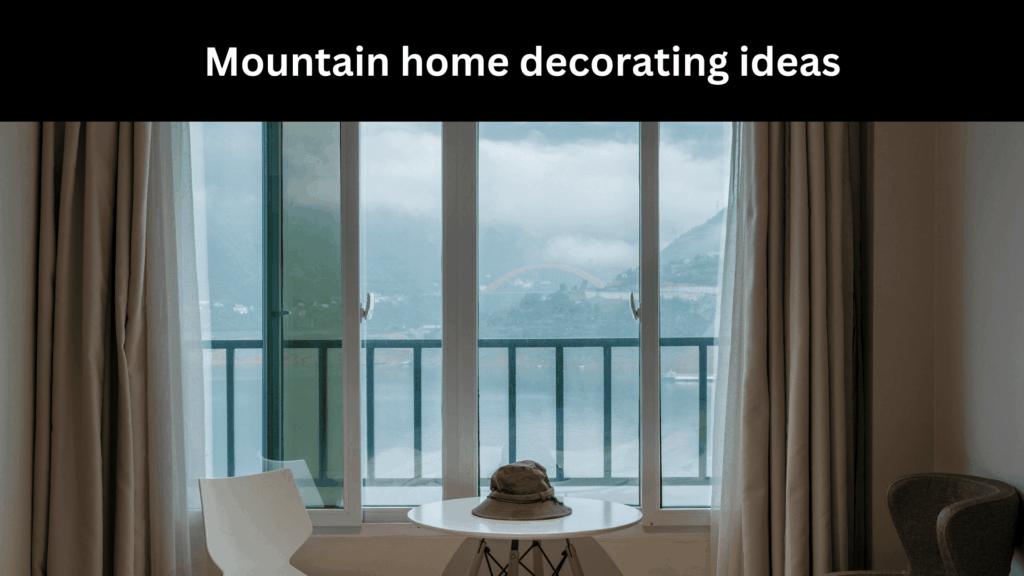
Mountain homes possess a rare kind of magic — the kind that whispers “slow down” the moment you step inside. Unlike urban apartments or suburban houses, they aren’t just places to live; they’re sanctuaries designed to help you reconnect with nature and yourself. This charm lies in the way they blend rugged, untouched beauty with the warmth and comfort of home.
Living in a mountain home means embracing a lifestyle shaped by the surrounding environment — the crisp morning air, the scent of pine, and the panoramic views of rolling hills or snow-capped peaks. Every design choice, from the structure’s architecture to the smallest décor detail, plays a role in reflecting that natural connection.
Defining a Mountain Home’s Aesthetic
The aesthetic of a mountain home is rooted in its setting. It draws heavily on natural elements that mirror the surrounding landscape:
- Materials: Wood beams, stone walls, leather upholstery, and wrought iron accents are staples.
- Colors: Earthy browns, mossy greens, muted blues, and warm neutrals echo the colors outside your windows.
- Textures: Cozy textiles like wool throws, chunky knit blankets, and sheepskin rugs add tactile warmth.
Instead of trying to overpower nature with flashy designs, a true mountain home complements it — creating a seamless transition between the outdoors and indoors.
Key Architectural Features That Influence Décor
Mountain homes often have distinctive architectural traits that set the tone for interior decorating. These include:
- Exposed Wooden Beams: They add rustic character and structural drama to the ceilings.
- Vaulted or Cathedral Ceilings: Perfect for showcasing large statement chandeliers and maximizing light.
- Stone Fireplaces: The heart of the living space, providing both warmth and a focal point.
- Expansive Windows: Framing breathtaking views and allowing natural light to flood the rooms.
- Wraparound Decks or Porches: Extending the living space into the open air.
These features aren’t just decorative — they influence how furniture is arranged, where lighting is placed, and even which colors work best in the home.
Planning Your Mountain Home Interior Design

Before you start buying furniture or hanging artwork, it’s essential to step back and plan your mountain home’s interior with intention. Mountain homes are deeply influenced by their surroundings, so your decorating approach should balance comfort, aesthetics, and functionality while honoring the unique environment.
Think of this stage as laying the blueprint for how you want your space to look, feel, and function. Without a plan, it’s easy to end up with a collection of beautiful items that don’t work together — or worse, a home that doesn’t reflect the charm of its location.
Assessing Your Space and Layout
Start with a careful evaluation of the physical structure of your home:
- Room Sizes & Flow: A sprawling lodge and a compact A-frame cabin require different furnishing strategies. Large rooms may need multiple seating zones, while small ones benefit from multi-purpose pieces.
- Natural Light: Identify which rooms get the most sunlight and which stay cooler and dimmer. This will influence your choice of colors, fabrics, and lighting.
- Architectural Highlights: Make a list of features you want to emphasize — a stone fireplace, a large picture window, or vaulted ceilings.
- Traffic Patterns: Think about how you and your guests move through the home, ensuring pathways remain open and functional.
Pro Tip: Use painter’s tape to mark furniture dimensions on the floor before purchasing anything. This prevents scale mistakes and overcrowding.
Choosing a Cohesive Design Theme
A mountain home looks best when every room speaks the same design language, even if the accents differ. That doesn’t mean everything must match perfectly — it means creating a visual and emotional flow throughout the home.
Here are three popular mountain home design themes to consider:
Rustic Lodge-Style
- Color Palette: Deep browns, forest greens, rich reds.
- Materials: Rough-hewn wood, natural stone, leather.
- Décor Accents: Plaid throws, antler chandeliers, woven baskets, and vintage skis.
- Mood: Warm, nostalgic, and full of character.
Modern Alpine Retreat
- Color Palette: Soft neutrals, crisp whites, and muted grays.
- Materials: Sleek wood finishes, glass, and brushed metal.
- Décor Accents: Minimalist artwork, geometric lighting, clean-lined furniture.
- Mood: Bright, airy, and uncluttered, but still inviting.
Minimalist Mountain Style
- Color Palette: Black, white, and subtle earth tones.
- Materials: Smooth wood panels, matte finishes, and simple textiles.
- Décor Accents: Few but intentional — think one large statement rug or a single oversized painting.
- Mood: Calm, serene, and open.
Balancing Function with Atmosphere
In a mountain home, décor must work practically for the lifestyle it supports. This often means:
- Choosing durable fabrics that can handle mud, snow, or pets.
- Ensuring storage solutions are built into furniture for seasonal gear.
- Incorporating ample seating for gatherings without overcrowding.
Your goal should be to create a home where you can entertain friends after a day of hiking or skiing, relax with a book by the fire, and still have room for family traditions and personal touches.
Choosing the Right Color Palette
The color palette you select for your mountain home will set the emotional tone for every room. In mountain living, colors do more than decorate — they connect your interior to the surrounding landscape, making your home feel like a natural extension of its environment.
A thoughtful color scheme not only enhances the home’s beauty but also helps you control how spacious, warm, or relaxing each room feels. The key is to draw inspiration from seasonal shifts and natural surroundings while ensuring year-round comfort.
Earthy Neutrals for a Warm Ambiance
Earth tones are a go-to choice for mountain homes because they mirror the landscape — think deep browns, caramel tans, warm beiges, and muted greens.
Why They Work:
- They create a sense of coziness and security.
- They pair beautifully with wood and stone finishes common in mountain architecture.
- They transition effortlessly between seasons.
How to Use Them:
- Paint living room walls in a soft taupe to warm up natural light.
- Incorporate chocolate-brown leather furniture for depth.
- Add olive-green throw pillows or rugs for subtle contrast.
Cool Tones for a Snowy Retreat Feel
Cool colors like soft grays, icy blues, and crisp whites evoke the freshness of a mountain winter and bring a calm, airy feel.
Why They Work:
- They make smaller rooms feel more open and spacious.
- They reflect light beautifully in homes with large windows.
- They complement stone fireplaces and metal accents.
How to Use Them:
- Choose pale blue for bedroom walls to promote relaxation.
- Layer white or light gray linens in the guest room for a fresh, welcoming vibe.
- Use silver-toned accessories for a touch of elegance.
Bold Accents to Add Personality
While neutrals and cool tones form a strong foundation, pops of bold color can bring life to the décor. Deep reds, burnt oranges, mustard yellows, or even a touch of teal can add character without overwhelming the room.
Why They Work:
- They break visual monotony.
- They can be easily changed seasonally through accessories.
- They draw attention to focal points like fireplaces or artwork.
How to Use Them:
- Place a ruby-red area rug under a coffee table for a warm focal point.
- Hang mustard-yellow curtains in the dining room for a sunny lift.
- Add teal cushions or pottery for a vibrant touch.
Tips for Combining Colors in a Mountain Home
- Follow the 60-30-10 Rule: 60% dominant color (walls), 30% secondary (furniture), 10% accent (decor).
- Consider the Seasons: Warmer hues for winter, lighter tones for summer — but keep the base consistent.
- Match the Outdoors: Look at your home’s surroundings during different times of the day and draw from those tones.
Furniture Selection for Mountain Living
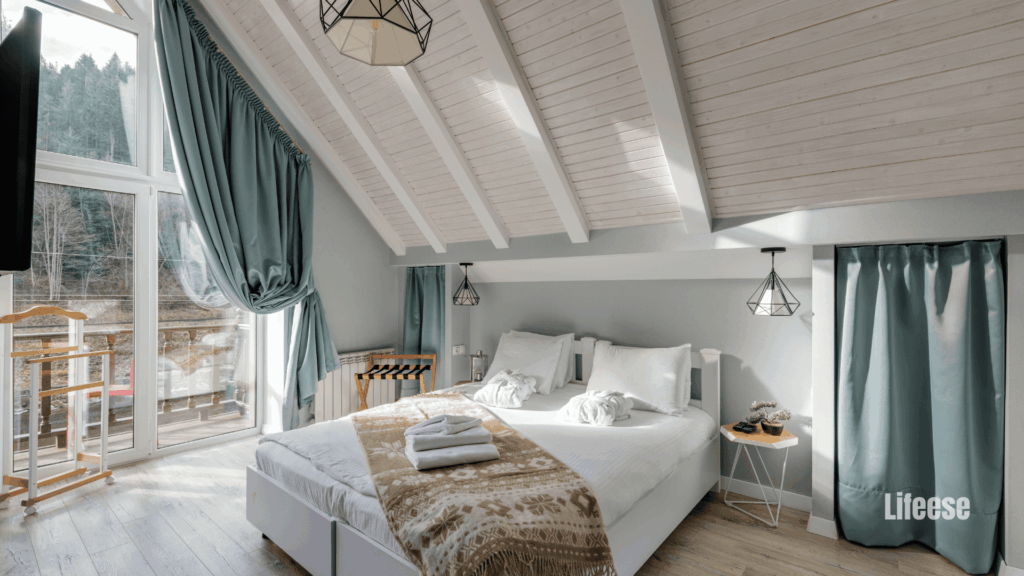
Choosing furniture for a mountain home isn’t just about style — it’s about creating a space that’s comfortable, functional, and resilient enough to handle the demands of mountain life. Whether your retreat is a small cabin tucked away in the woods or a sprawling lodge with panoramic views, your furniture choices should enhance the home’s natural charm while supporting the way you live in it.
Mountain homes often serve multiple purposes — from hosting family gatherings to providing a quiet space for reading by the fire. This means the furniture must strike a balance between rustic beauty and everyday practicality.
Space-Saving Furniture for Smaller Cabins
If your mountain home is compact, smart furniture choices can make all the difference.
Best Options:
- Sleeper Sofas or Futons: Provide extra sleeping space for guests without the need for a dedicated guest room.
- Nesting Tables: Offer flexibility — spread them out when entertaining or tuck them away when not in use.
- Storage Ottomans: Serve as footrests, coffee tables, and hidden storage all in one.
- Wall-Mounted Desks or Fold-Out Tables: Perfect for work or dining in tight quarters.
Tip: In small cabins, stick to furniture with clean lines and avoid overly bulky pieces, as they can make the space feel cramped.
Cozy Seating Arrangements for Gathering Spaces
In a mountain home, the living room is often the heart of the house — especially in winter. Your seating should invite guests to relax and linger.
Ideas for Comfort & Style:
- Sectional Sofas: Great for large groups and can be positioned to take advantage of the view or fireplace.
- Overstuffed Armchairs: Pair them with side tables and reading lamps for cozy reading corners.
- Window Benches: Offer seating and storage while maximizing scenic views.
Arrangement Tip: Create conversation areas by grouping seating around a central focal point — usually a fireplace, coffee table, or large window.
Materials That Withstand Mountain Living
Mountain climates can be tough on furniture, so durability is key.
- Solid Wood Frames: Timeless, sturdy, and long-lasting.
- Leather Upholstery: Easy to clean, ages beautifully, and works well with rustic interiors.
- Performance Fabrics: Stain-resistant and durable, ideal for homes with kids, pets, or frequent guests.
Blending Rustic Charm with Modern Comfort
You don’t have to choose between rustic style and modern convenience — the best mountain homes merge the two.
Examples:
- Pair a reclaimed wood dining table with sleek, upholstered chairs.
- Place a rustic stone coffee table in front of a streamlined sofa.
- Mix vintage armoires with contemporary lighting fixtures.
This approach keeps the space feeling warm and authentic while ensuring it’s functional for everyday life.
Scaling Furniture to the Space
Mountain homes with high ceilings and open layouts can handle oversized statement pieces like:
- Large farmhouse dining tables.
- Tall bookshelves.
- Generously sized sectional sofas.
Smaller cabins, on the other hand, require multi-functional, lightweight pieces to keep the space open and airy.
Incorporating Natural Materials
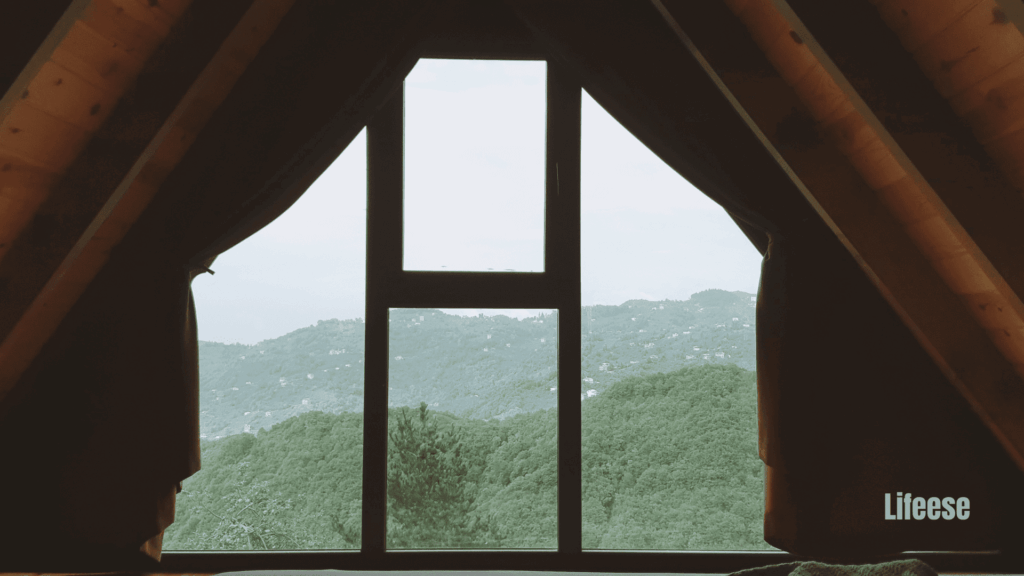
Natural materials are the heartbeat of mountain home design. They not only connect your interior to the outdoors but also create a timeless aesthetic that feels authentic to the location. By using wood, stone, leather, and other organic elements, you add warmth, durability, and a sense of grounding to every space.
In a mountain home, these materials don’t just decorate — they define the style. They’re the reason a cabin feels cozy on a snowy evening or inviting on a crisp autumn morning.
Wood, Stone, and Leather Combinations
Wood
- The most defining material in mountain décor.
- Works beautifully in ceilings with exposed beams, reclaimed barn wood walls, or solid oak flooring.
- Can be stained dark for a traditional lodge look or left natural for a modern alpine feel.
Stone
- Brings rugged texture and natural elegance.
- Perfect for fireplaces, accent walls, and even kitchen backsplashes.
- Granite, slate, or river rock are popular choices for their durability and visual appeal.
Leather
- Adds a luxurious yet rustic touch.
- Works well in sofas, armchairs, barstools, or even decorative cushions.
- Ages beautifully, developing a patina that adds character over time.
Pro Tip: Combining wood and stone creates a strong, structural feeling, while adding leather softens the look and makes it more inviting.
Sustainable and Locally Sourced Décor
Mountain living is often about respecting and preserving nature. Choosing sustainable materials and supporting local artisans adds another layer of meaning to your home’s design.
Ways to Incorporate Sustainability:
- Use locally milled lumber for flooring or paneling.
- Choose stone quarried in your region for fireplaces or patios.
- Buy handcrafted furniture from local woodworkers instead of mass-produced items.
- Opt for natural, untreated fabrics like cotton, wool, and linen to avoid harsh chemicals.
Not only do these choices reduce your environmental footprint, but they also make your home feel more connected to its surroundings — almost as if it grew right from the land.
Balancing Raw and Refined Textures
One of the secrets to a visually stunning mountain home is layering contrasting textures:
- Pair rough stone walls with smooth, polished wood floors.
- Place a sleek leather sofa against a reclaimed wood backdrop.
- Add soft wool blankets to balance cold stone fireplaces.
This interplay keeps the design from feeling one-dimensional while adding depth and interest to every room.
Practical Benefits of Natural Materials
Beyond beauty, natural materials offer practical advantages:
- Durability: Wood and stone withstand the wear of seasonal changes and heavy use.
- Low Maintenance: Leather and stone are relatively easy to clean.
- Aging Gracefully: Many natural materials look better over time rather than worn out.
Fireplace & Hearth Décor Ideas
In a mountain home, the fireplace is more than just a source of heat — it’s the heart of the home, a natural gathering spot where stories are shared, mugs of cocoa are passed around, and guests linger long after dinner. Whether it’s the crackle of wood logs on a snowy night or the soft glow of gas flames on a cool summer evening, the fireplace sets the tone for warmth and connection.
A well-decorated hearth can become a striking focal point, reflecting your home’s personality and style.
Rustic Mantel Styling
The rustic style leans into the mountain home’s natural charm, emphasizing texture, warmth, and tradition.
Ideas for a Rustic Mantel:
- Reclaimed Wood Mantel: Adds authenticity and history, especially when paired with visible knots and grain.
- Seasonal Greenery: Use pine garlands, dried flowers, or autumn leaves to match the season.
- Lanterns & Candles: Create soft, ambient lighting in the evenings.
- Personal Touches: Display framed family photos, antique clocks, or handmade pottery.
Tip: Keep the arrangement balanced but not overly symmetrical — rustic décor benefits from a little organic imperfection.
Modern Fireplace Designs
If your mountain home leans toward a contemporary alpine look, a modern fireplace can be sleek, minimalist, and clean-lined without losing warmth.
Modern Hearth Elements:
- Stone Slabs with Minimal Seams: Creates a smooth, refined backdrop.
- Metal Surrounds: Brushed steel, matte black, or bronze can add an industrial touch.
- Floating Mantels: Thin wooden shelves or no mantel at all for a streamlined effect.
- Built-In Storage: Integrated shelves for firewood double as a design feature.
Tip: Use a monochromatic color palette for the fireplace materials to enhance the modern aesthetic.
Decorating Around the Hearth
The space around the fireplace can enhance its role as the room’s centerpiece.
Rustic Approach:
- Stack neatly cut firewood in a side alcove or wicker basket.
- Use a forged-iron fire tool set for added authenticity.
Modern Approach:
- Install low, built-in benches on either side for extra seating.
- Add abstract art or a large mirror above the mantel for visual height.
Functional & Cozy Accessories
- Fire Screens: Choose decorative wrought-iron for rustic or geometric metal designs for modern.
- Throw Blankets: Keep a basket of chunky-knit or fleece blankets nearby for instant coziness.
- Area Rugs: Place a soft, heat-resistant rug in front of the hearth to define the gathering space.
Lighting the Fireplace Zone
Even when the fire isn’t lit, the area can remain warm and inviting with strategic lighting:
- Rustic: Edison bulb sconces or lantern-style lamps.
- Modern: Recessed spotlights or slim LED wall lights.
Maximizing Natural Light
One of the greatest luxuries of a mountain home is the view — snow-dusted peaks in winter, lush green slopes in summer, golden leaves in autumn. Natural light doesn’t just illuminate your space; it brings the outdoors inside, enhancing every color, texture, and detail in your décor.
Maximizing sunlight in a mountain home is about more than opening the curtains — it’s a careful blend of architecture, window treatments, and interior design choices that work together to keep the home bright while preserving its intimate atmosphere.
Window Treatments for Mountain Views

Large picture windows are a hallmark of mountain homes, but how you dress them can make or break the space.
Best Practices:
- Go Sheer or Minimal: Use lightweight linen or sheer curtains that soften the light without blocking the view.
- Layer Strategically: Combine sheer panels with heavier drapes so you can adjust for privacy or temperature control.
- Natural Shades: Woven bamboo, reed, or matchstick blinds add texture while allowing filtered light.
- Bare Beauty: In remote locations where privacy isn’t a concern, consider leaving windows uncovered to showcase the view 24/7.
Tip: For south-facing windows that get strong sunlight, use UV-filtering film to protect fabrics and furniture from fading.
Skylights and Open Spaces
Skylights are a perfect solution for mountain homes surrounded by tall trees or slopes where side windows may be shaded.
Advantages of Skylights:
- Bring daylight deep into the home’s interior.
- Create visual drama in vaulted ceilings.
- Provide stargazing opportunities on clear nights.
Design Tip: Place skylights above stairwells, bathrooms, and kitchens — areas that often lack large windows but benefit from extra light.
Open-concept layouts also play a big role in light distribution. Removing unnecessary walls allows light from one window to brighten multiple rooms.
Reflective Surfaces and Light Amplification
You can multiply the impact of natural light with clever interior tricks:
- Mirrors: Position them opposite windows to bounce light deeper into the room.
- Glossy Finishes: Lightly polished wood floors or semi-gloss paint on trim can subtly reflect light.
- Glass Furniture: Coffee tables, shelving, or cabinet doors keep sightlines open and allow light to pass through.
Choosing Light-Enhancing Colors
Wall and ceiling colors can affect how bright your space feels:
- Light Neutrals: Soft whites, warm creams, and pale grays reflect light better than darker tones.
- Nature-Inspired Tints: Muted sage, powder blue, or soft sand add color without absorbing too much light.
- Ceiling Brightness: A white or light-toned ceiling maximizes upward light reflection, especially in rooms with dark beams.
Balancing Brightness with Coziness
While maximizing light is important, mountain homes also need to feel intimate and warm.
- Use area rugs and soft furnishings to ground bright spaces.
- Incorporate warm-toned artificial lighting for evenings.
- Mix airy curtains with tactile fabrics like wool throws to balance openness with comfort.
FAQs on Mountain Home Decorating Ideas
How do I choose the best furniture for a mountain home?
Opt for durable, comfortable, and weather-appropriate pieces.
Which colors work best for mountain interiors?
Earthy neutrals, cool tones, and seasonal accent colors work well.
How can I make my mountain home feel cozy?
Layer textures, add warm lighting, and use plenty of soft furnishings.
Are there budget-friendly decorating options?
Yes—thrift stores, DIY projects, and small upgrades can be very effective.
What materials suit mountain homes?
Wood, stone, leather, and natural textiles.
How can I blend modern style with rustic charm?
Mix contemporary furniture with traditional materials and accents.
Conclusion: Creating Your Dream Mountain Home Retreat
Decorating a mountain home is about honoring its natural surroundings while creating a space that’s comfortable, functional, and full of personality. By blending earthy materials, cozy textures, and thoughtful design choices, you can transform your home into a serene retreat you’ll love year-round.
